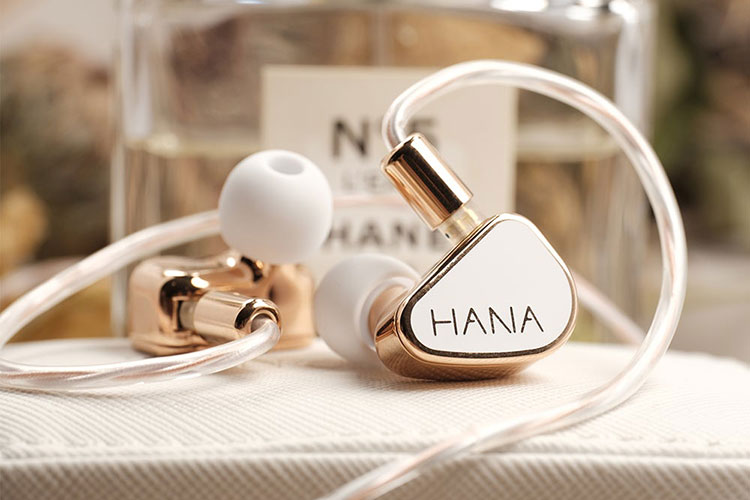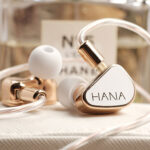The Tanchjim HANA 2021 is a new update of the popular IEM featuring a 3rd gen DMT dynamic driver and a retuned sound. It is priced at $179.99.
Disclaimer: The Tanchjim HANA 2021 was sent to us as a sample in exchange for our honest opinion in this review. We thank Shenzhen Audio & Tanchjim for this opportunity.
To learn more about Tanchjim reviews on Headfonics you can click here.
Note, this review follows our new scoring guidelines for 2021 which you can read up on here.
Last year, we had the opportunity to review the Tanchjim HANA, and we found that it offers an enjoyable dynamic driver-based IEM with a luxurious and fashionable design. Since then, Tanchjim has also released different IEMs including the Tanchjim Darling.
This year, I was surprised to hear about Tanchjim releasing another HANA, which is the HANA 2021. My first impression is that it kept most of the luxurious trappings of the original, but hopefully, they have updated it to make it an even more competitive offering for 2021.
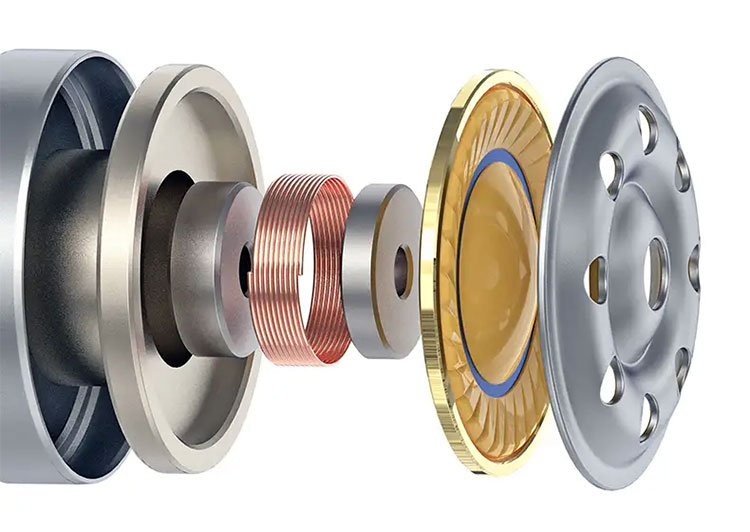
Tech Highlights
Similar to the previous HANA, the HANA 2021 takes a single dynamic driver and houses it in stainless steel shells. However, the dynamic drivers housed in the HANA 2021 are not your off-the-shelf dynamic driver, instead, Tanchjim has added a DMT 3rd magnetic circuit allowing the motor to produce a higher amount of magnetic flux.
The diaphragms on the other hand are created using a Liquid Crystal Polymer which allows the diaphragm faithful reproduction of the music over a wider bandwidth. However, the HANA 2021 isn’t simply a redressed HANA, instead, it’s re-tuned based on the feedback that Tanchjim has received regarding the original HANA.

Design
In keeping with HANA’s design language, the HANA 2021 retains the same elegant aesthetic, staying with a rose-gold and white color combination. The shells themselves are made with 2 pieces of stainless steel and the sides of the shells have a rose gold finish while the top of the shells has a simulated porcelain finish.
Looking at nozzles, the stem of the nozzle is not particularly long, but it has a lip that will ensure that the ear tips will stay in place more securely. On the connection side, each shell has a plastic terminal with a deep 2-pin socket which ensures that the cable remains securely connected to the shells at all times.
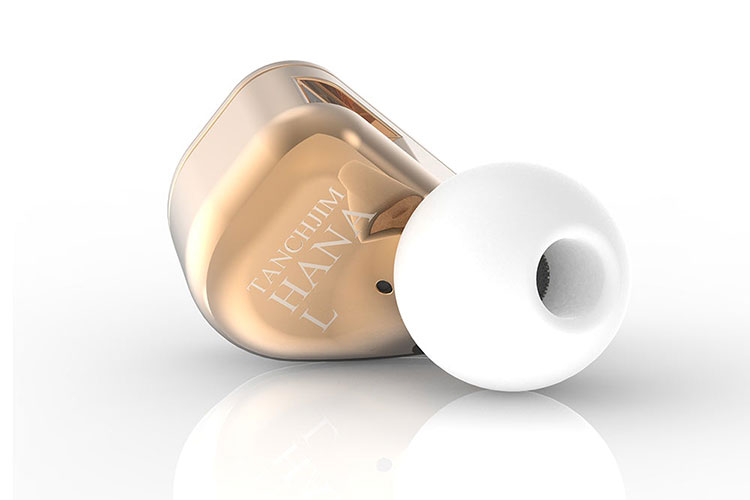
Comfort & Isolation
Being made of stainless steel, I was expecting the HANA 2021 to be a heavy IEM. However, I was pleasantly surprised that they don’t bother me as much.
The nozzle is relatively short, so it doesn’t insert too far down into my ear canal. The size of the nozzles themselves aren’t particularly large, so finding the right ear tips to get the right fit isn’t too much trouble either.
Despite the weight and the shallower insertion, the HANA 2021 has a secure fit in my ears, so they don’t typically fall off too easily. The shallower insertion also allows me to wear them for hours on end without any issue.
Due to the shallower insertion though, the HANA 2021 doesn’t isolate particularly well. When I start playing music at my normal listening levels, I can hear finger snaps or even the keystrokes on my keyboard as I’m typing this.
Tips
The stock ear tips that come with the HANA 2021 are relatively soft, so they don’t naturally isolate too well. Aftermarket tips with more rigid stems such as Final E will improve the amount of isolation significantly.
Stock Cable
The HANA 2021 arrives with a stock cable that pairs up well with the color theme of the HANA 2021. So the plugs are made of rose gold finished plastic. The entire length of the cable is covered in a clear PVC coating showing the inside of the cable which has a white and a rose gold cable inside.
Still keeping the color theme of the IEM, the splitter on the cable is also coated in a rose gold finish, while there is an adjustment mechanism that will shorten the split of the cable.
On the other end of the cable, the cable is curved to conform to the shape of the back of my ears and retains some stiffness to make it secure and easy to wear.
Then on the side of the IEMs, the cables still have rose gold connectors which have longer pins that can be inserted into the shells to keep the cable securely connected to the shells.
Packaging & Accessories
The HANA 2021 comes in a package that has an outer sleeve that shows the HANA 2021 with the Tanchjim branding together with more information about the IEM at the back of the sleeve.
Inside, the box itself is made to look like rose gold and copper while being rigid enough to secure the contents of the package.
Inside, there is a smaller box for the accessories of the HANA 2021, which contains the manuals, warranty information, and spare ear tips. There are 2 types of ear tips in Small, medium, and large, which are arranged on cards that indicate that the ear tips are treble enhancing and bass enhancing.
Underneath the accessories box, of course, there’s the IEMs themselves which already have their own pair of ear tips, which are similar to the medium-sized bass ear tips. Then there’s the cable and a carrying case.
The carrying case the comes with the HANA 2021 ties it all up and makes the HANA 2021 truly an elegant package. The case itself is covered in white leatherette material with rose gold zippers, and to be honest, the case still looks like something that would come straight out of a boutique rather than something from an IEM manufacturer.
Sound Impressions
Bass
With dynamic drivers, I have come to expect that bass would typically be rolled off while having a mid-bass hump to compensate for the roll-off. However, the HANA 2021 doesn’t sound rolled off, probably due to the more extended measured frequency response where the HANA is measured to go down into 8Hz.
This allows the HANA 2021 to create a fulsome type of sub-bass response that floods the entire soundscape. Surprisingly, the mid-bass response of the HANA 2021 isn’t particularly elevated, instead, it’s generally neutral while presenting an appropriate amount of weight behind each drum beat.
This makes it easy to pick out the weight of each drum hit or bass note. However, each note tends to linger a bit longer than natural, making drum hits a bit less natural particularly when there are successive beats.
Mids
I personally have a bias towards the midrange that’s produced by dynamic drivers, as they are typically the more natural to my ears compared to BA.
This remains the case with the HANA 2021, as the midrange tends to have a planted fundamental allowing the force behind vocal tracks to easily be conveyed, while at the same time there is a measured amount of injected euphony which gives the vocals a sweeter quality.
With midrange instruments, on the other hand, the HANA 2021 gives instruments a brighter harmonic tilt. This gives pianos a thinner presentation but does wonders for guitar plucks as each pluck and strum resonates as singular notes.
While the midrange on the HANA 2021 is slightly colored, it remains textured, allowing the subtle textures of guitar plucks to be easily audible. Vocal textures are also easily heard, as vocalists like Adele retain that raspy vocal quality making it natural overall.
Treble
While the treble is more forward relative to the midrange, it doesn’t become shouty at all. In fact, it stays safely away from being sibilant, ensuring that the HANA 2021 would have a sweeter treble range while never becoming fatiguing.
With cymbal hits and wind instruments, the HANA 2021 is surefooted in its presentation, as the leading edges of notes remain sharp. However, the safer treble presentation also makes it a bit thin overall, making cymbals lack body despite having the appropriate amount of bite and sparkle.
Though the HANA 2021 has a safer treble response, it still extends its treble response into the upper treble ranges, allowing space and room information to come through clearly.
Staging
With the more extended upper treble range, the imaging response is kept natural, allowing images to be created in the appropriate positions within the soundscape. The images that are formed within the soundstage are also of the appropriate size, allowing them to occupy a realistic amount of space.
Having a less than tight seal on the HANA 2021 contributes to it having an impressively wide soundscape, allowing elements to breathe within the soundstage.
There is also a sense of layering within the soundstage, allowing images to have both a sense of depth and width that’s proportionate to each other.
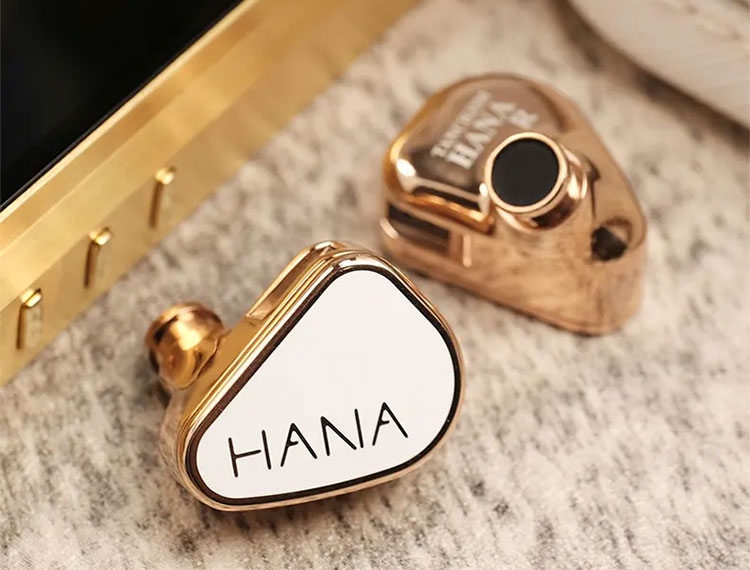
Synergy
Efficiency
Having an impedance of 32Ω with a sensitivity level of just 110dB, the HANA 2021 doesn’t need much power to bring it to loud listening levels. With the Hidizs S3 Pro, I only needed to crank it up to 45% of that 55mW rating to reach my comfortable listening levels.
Moving over to other sources such as the Dragonfly Red, I only needed 30% for my normal listening levels. Then with my iBasso DX200 using an Amp1 module, my volume hovers around 80/150 for my normal listening levels.
Tips
In the box, there are 2 types of ear tips that are provided with the HANA 2021, and these are the bass ear tips and the treble ear tips. True enough, the labels accurately describe what the ear tips do in terms of changing the sound.
Although I would have wanted to have a more planted treble response out of the HANA 2021, the treble ear tips simply elevate the treble response instead of making it more substantial. So to my ears, the bass ear tips give me a better tonal balance comparatively.
Pairings
Almost anything that has a 3.5mm jack can power the HANA 2021, but it’s revealing enough to show the quality of the upstream gear that it’s connected to.
The first DAC/Amp that I used to power the HANA 2021 is the Hidizs S3 Pro, which has substantial power to drive the HANA 2021, but ultimately loses control over the drivers particularly with bassy tracks where the bass becomes loose and bloomy.
Moving over to the ddHiFi TC35 Pro, the more balanced presentation of the TC35 Pro creates an overall more even-handed tonal presentation.
This allows the bass to not overshadow the rest of the frequency spectrum while introducing a touch of euphony into the midrange. The TC35 Pro also allows the HANA 2021’s soundstage to breathe better, allowing the images to be formed further away into the soundscape.
An even wider soundstage is cast when I connect the HANA 2021 to the iBasso DX200, allowing imaging and separation to be more apparent. Also, the placement of the images within the soundstage remains accurate while each image is made more defined.
While the tonal presentation is generally flat, there is a slight dip in the midrange while maintaining a safe, but enjoyable balance.
Click on page 2 below for select comparisons

